Baby girl nursery ideas – 9 ways to create a comfortable haven that doesn't conform to norms
Choose these baby girl nursery ideas to create a beautiful space for both mother and child to enjoy
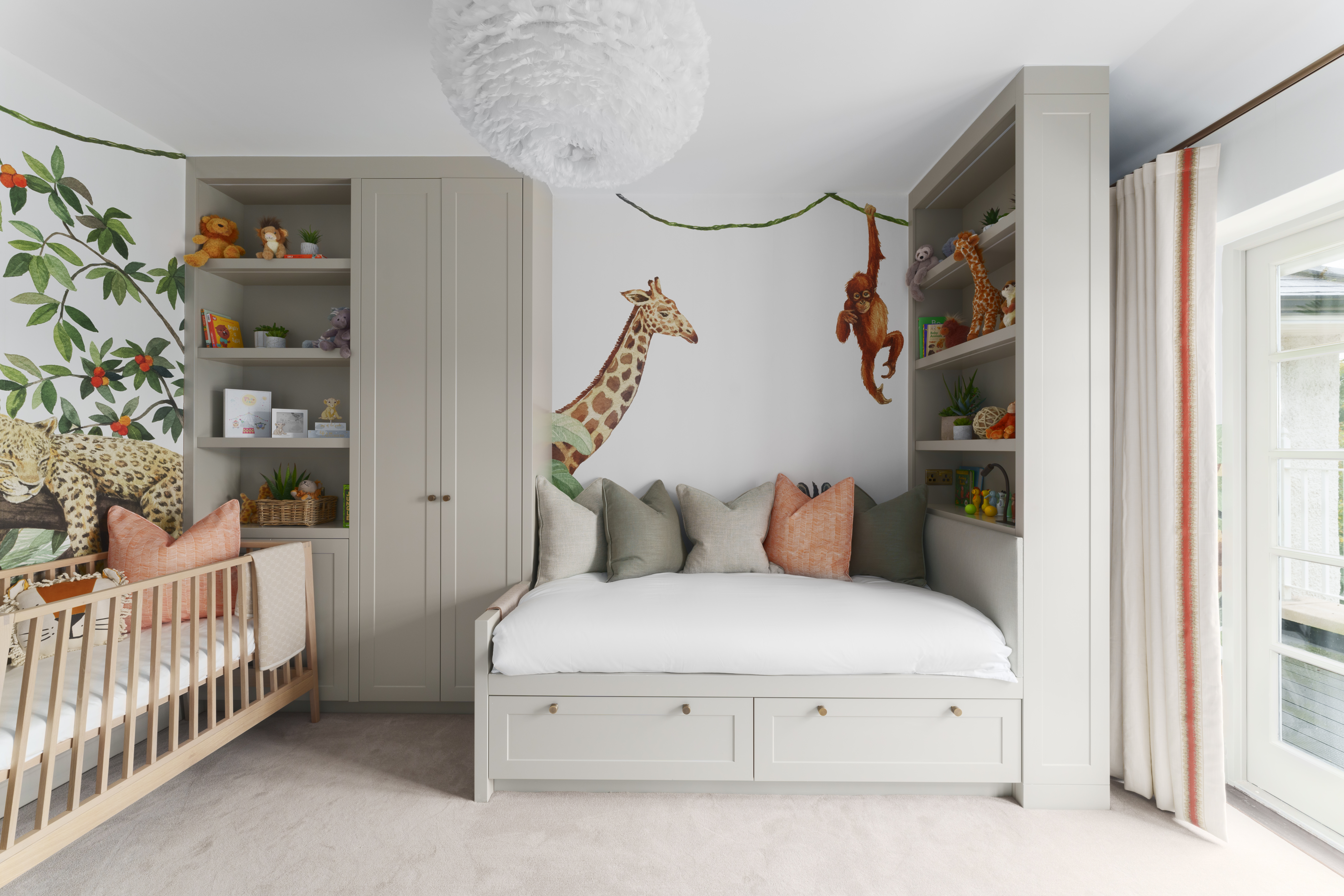

Baby girl nursery ideas aren't what they used to be. With changing perspectives and with the need to break away from gender norms, many parents now prefer to have gender-neutral nurseries. This is the new era of nurseries that assimilate functionality, design, and more, without allowing stereotypes to slip into the space. Hello, new-age rooms... and parents!
Gone are the days of blue for boys and pink for girls. Today's nursery ideas should be about clever use of color and textures that induces sleep and rest, prints and accessories that open up a newborn's worldview, plus a safe space, full of plush materials that invigorate the senses.
If you're all geared up to decorate your baby girl's nursery, then we've got some great ideas for you.
9 caring ways to design a baby girl nursery
If your baby girl's nursery is a room that can evolve with them as they grow, all the better. 'To avoid a look that ages quickly as your child grows up, ensure you consider a scheme and design that offers longevity and can be easily updated with new accessories or furniture,' says Helen Shaw, Benjamin Moore's UK Director.
1. Choose animal-themed wallpaper to introduce nature
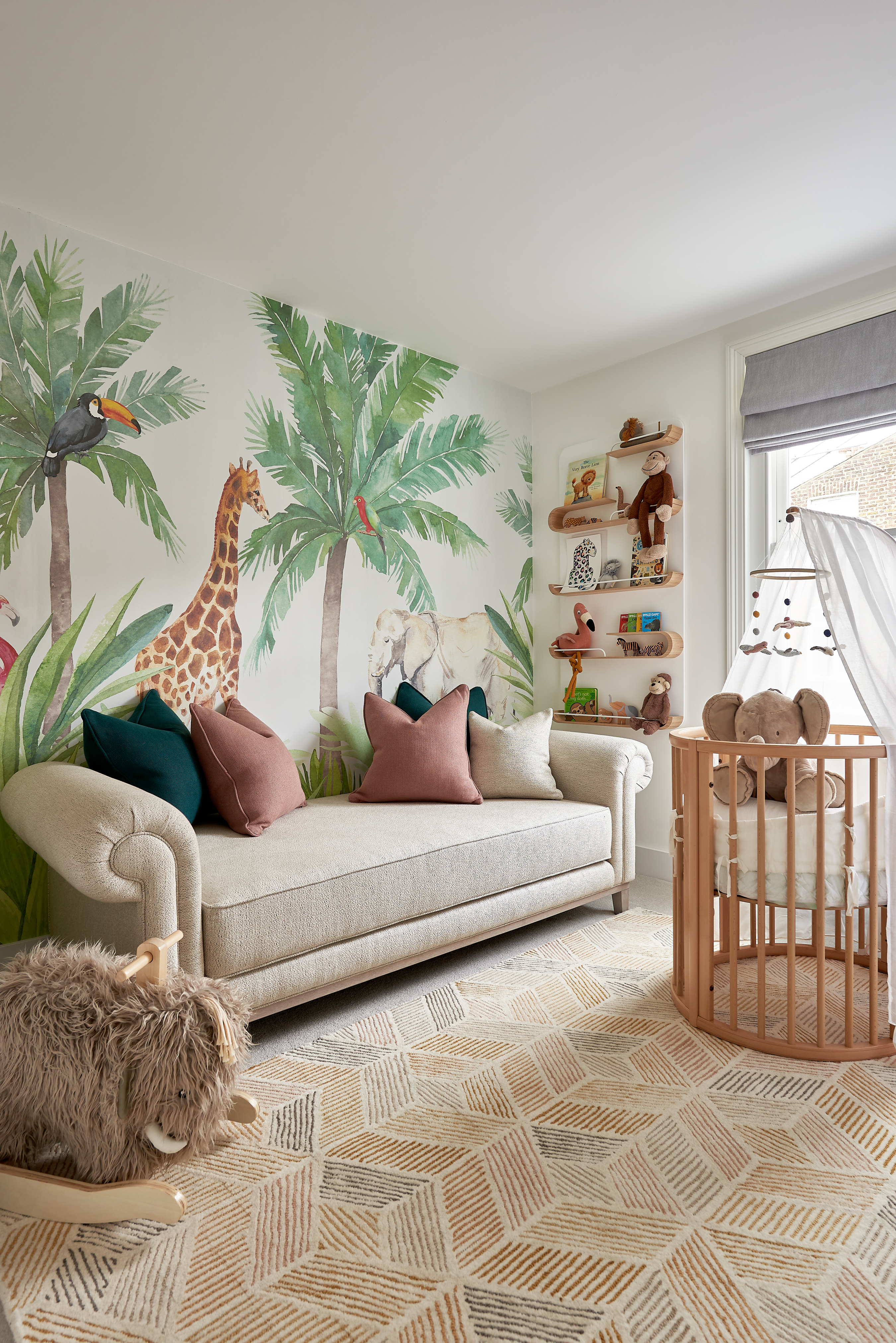
What kind of nursery theme will you pick? Your nursery design is a space they touch, feel and look at for most of their growing up months, so it's an important choice. For this reason, you should consider spaces that encourage learning or even open up the world for them. Consider an animal-themed room, where large images of elephants, giraffes, lions, and more will help develop an interest in nature.
'The bedroom is a separate universe that belongs to the child; creating a dreamlike and adaptable space where the imagination has room to grow is important,' says interior designer Stéphanie Coutas. 'This room features lacquered materials which are easy to clean, colorful wallpapers and decorations, and tactile fabrics that bring softness and warmth to the space.'
2. In case of a small space, use entire walls for cubbies
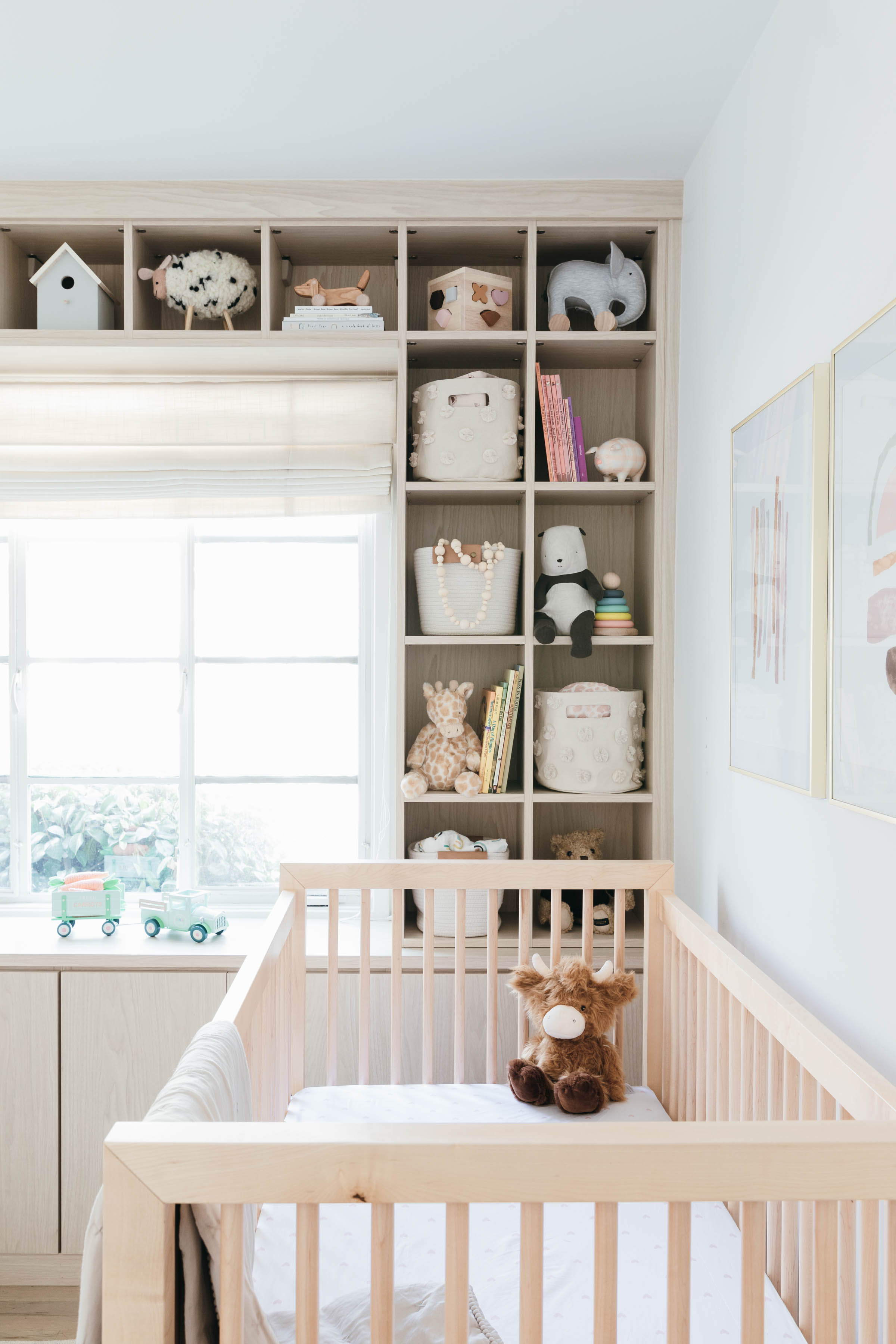
Consider clothes and kids' toy storage ideas that provide easy access while you wipe, change or lull the baby to sleep. Built-in shelving with open cubbies can be useful, as everything will be at arm's reach. If you have a small space, worry not, as a beautiful and functional space can be created for your baby in even limited square footage.
Why not use the entire length and breadth of a wall for expansive storage?
'Our goal was to make the most of our 800 square foot home, which meant that my husband's work-from-home office had to be partially transformed into the nursery,' says interior designer Anne Sage. 'Those shelves were previously full of my books, but I cleared them out and filled them with a mix of children's books and toys for a fun and colorful display that served a storage role as well.'
'Even when you try to keep baby gear to a minimum, little ones come with so much stuff,' Anne adds. 'Storage is key for keeping it corralled and organized, especially during a period in life that is going to feel chaotic even without the baby's toys and gear tumbling all over the place. Plus, new parents spend so much time in the nursery in those early days and weeks after the baby's arrival – also the space should feel tidy, calm, and peaceful. Ample storage is the way to make it happen.'
3. Create a soft, gentle space with plush materials
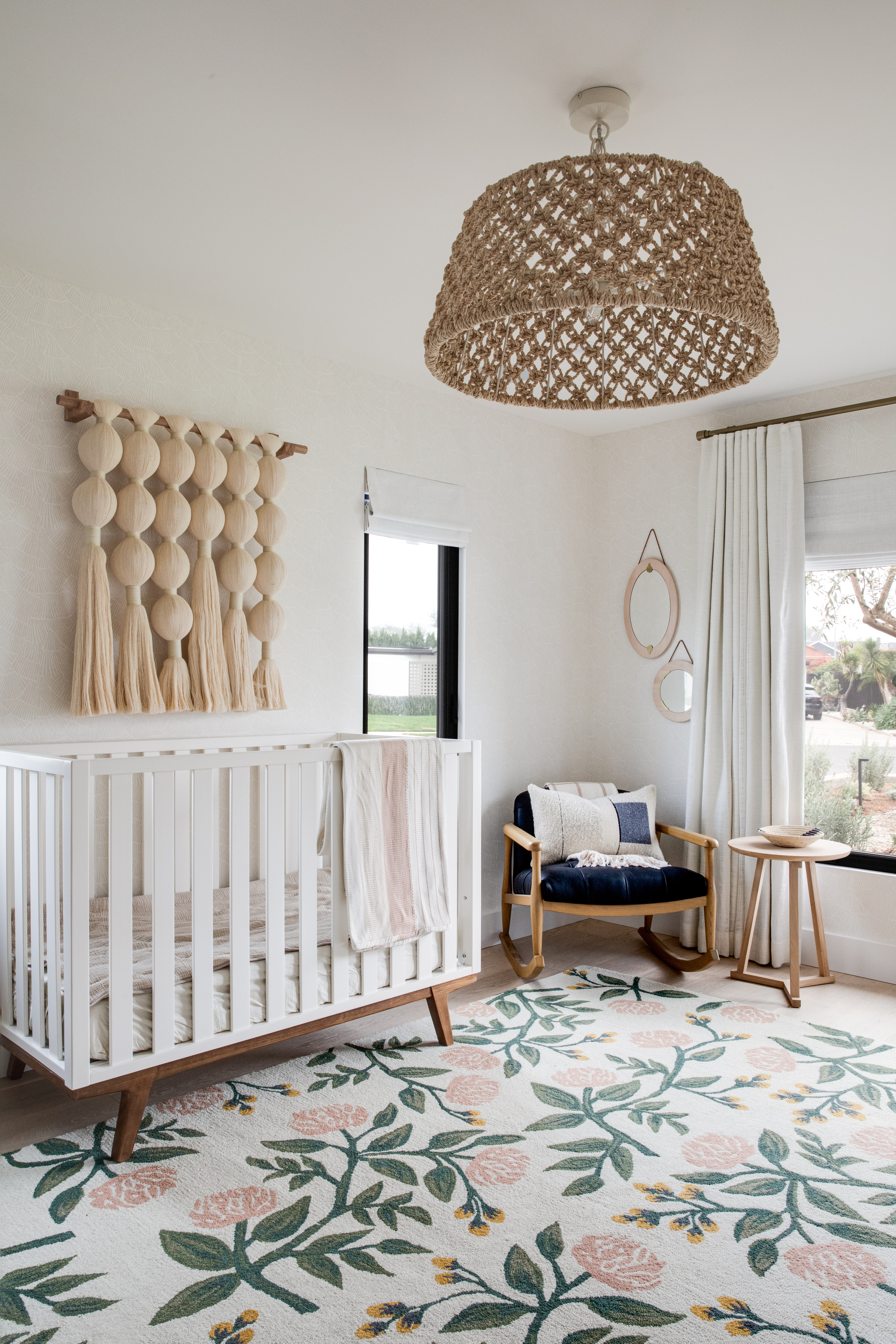
Whether it's a baby girl's or a baby boy's nursery, a sensory design will only help your baby develop and learn. A tactile environment can help aid the child's learning. For this, soften the room by introducing different textures like wool, cotton, wood, etc. Even different shapes like stripes, gingham, and polka dots are classic unisex designs and can expand the toddler's sense of visuals. Fabric bunting can be strung up high, out of reach of little hands, to bring a touch of frivolity and fun.
'My overriding mantra when designing nurseries is the word “soft”,' says Anne. 'This room is a baby’s transition from the womb to the real world, so everything about it should feel like a gentle and welcoming embrace. A super plush rug, dimmable lighting, and blackout lining on the window treatments are all must-haves.'
'And while I do like to incorporate some color into a nursery, I prefer a subdued approach,' Anne explains. 'Anything loud and garish is just going to feel obnoxious after you've spent hours and hours staring at it from your nursing chair.'
4. Design a space that grows with the child
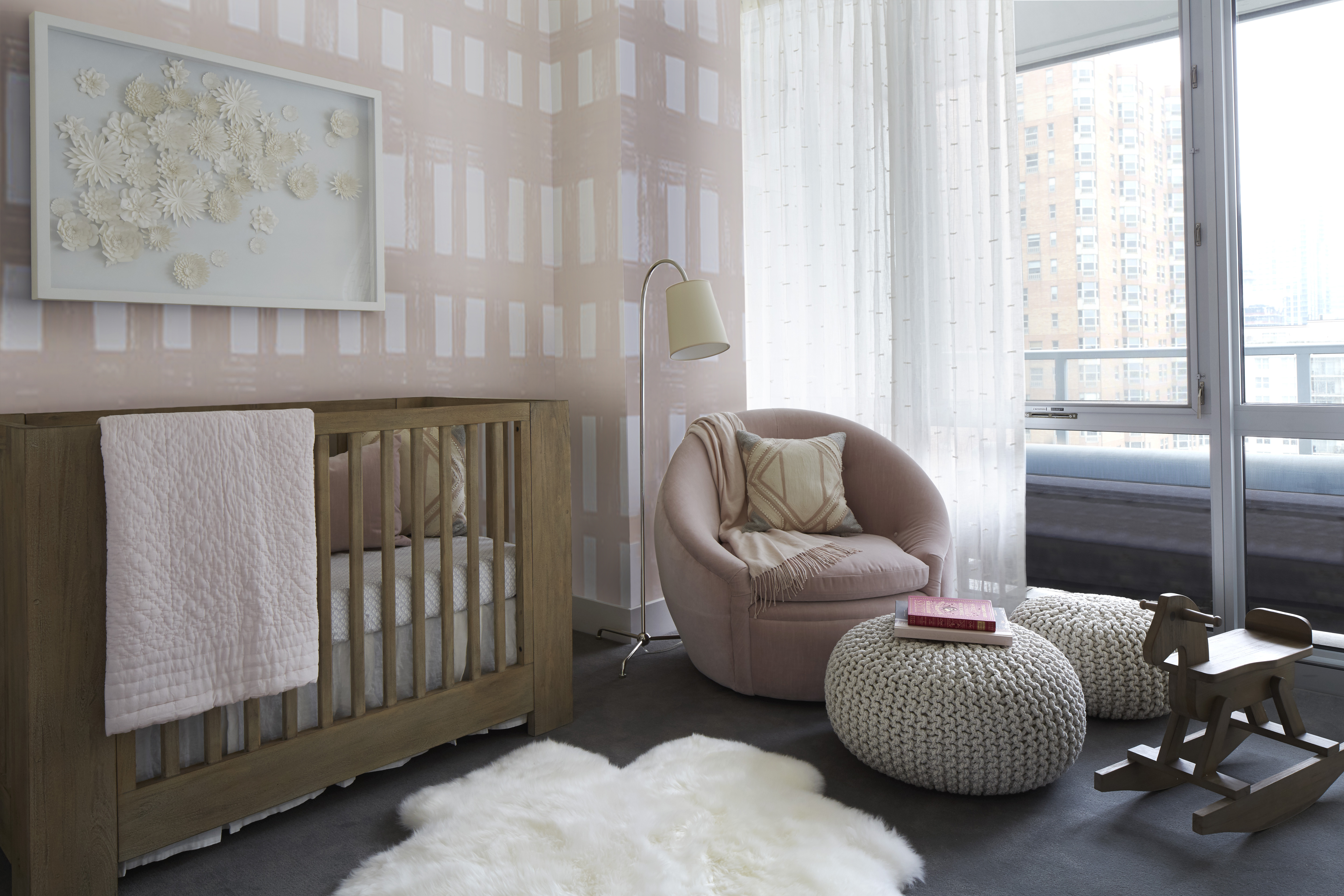
Before you start designing the nursery, take a moment to consider what you want out of this space in the next few years. Baby will grow up in a year or two, and the space will need to grow with her as well. In that case, do you see this room being passed on to a future sibling? Or would you like to covert this into a room for a toddler and beyond.
One way to deal with this is to go with multipurpose furniture that can be used for several other purposes. For instance, a convertible crib that can be changed into a toddler bed, or a daybed that you use for sitting in the nursery can later be used as a bed for the child. Similarly, a dresser used for changing the baby can be used for storing toys, and later, books.
You could go with a neutral nursery that looks timeless and can be used by the growing child. Consider adding chalkboard paint so the toddler can use the wall for her creativity, or for all the alphabet she's learning.
'We gave this newborn a room for her to grow,' says Todd Prince, founder of Todd Prince Design. 'By adding classic details with traditional molding and a blush chinoiserie wallpaper by Schumacher, this nursery was designed to be sophisticated from toddler to teenager.'
5. Reserve bold colors for furniture and decor
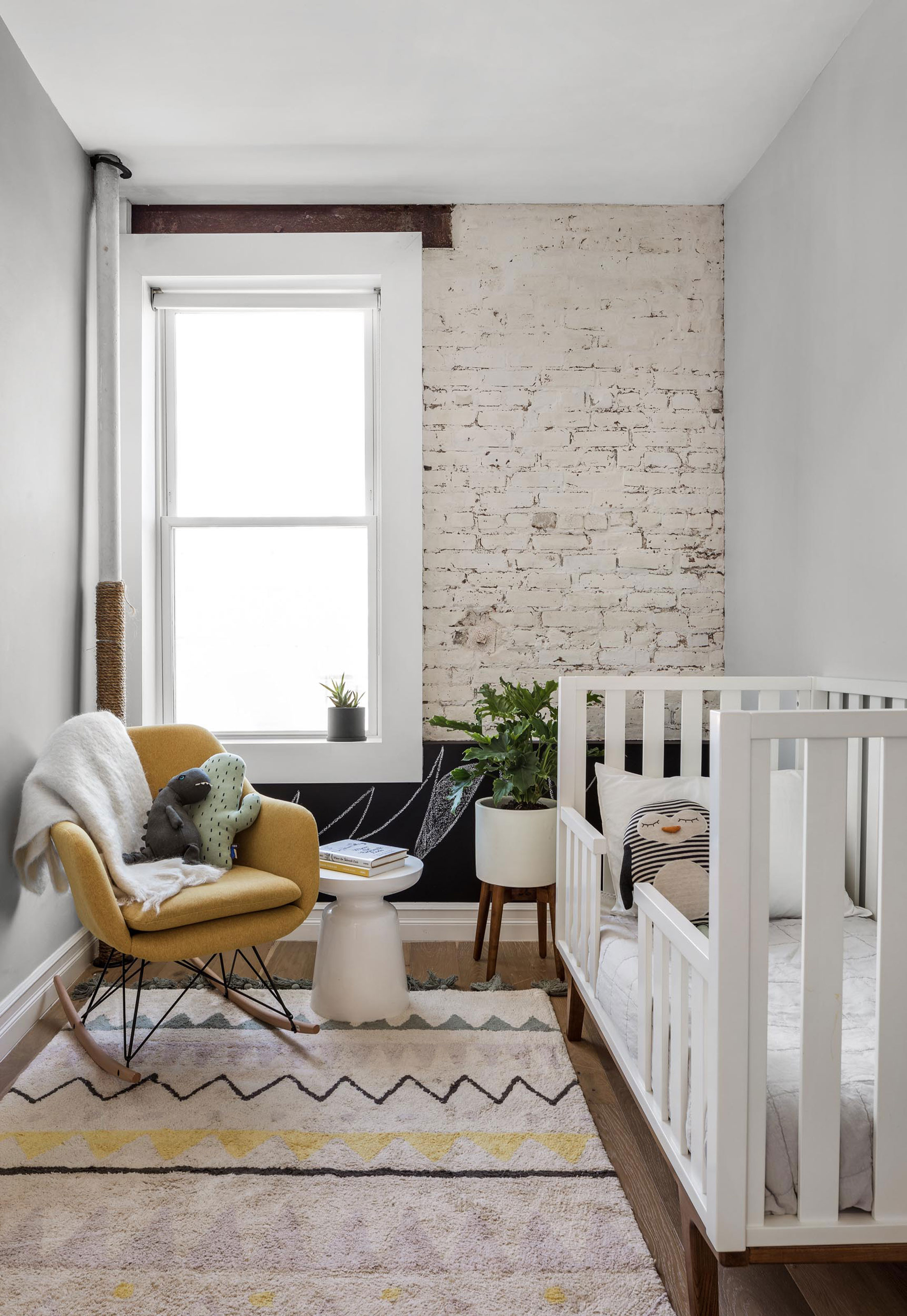
Let's be honest; we all want a nursery that looks beautiful and lasts long. One way to ensure that the space is characterful is by choosing furniture and decor pieces drenched in color so that the walls and the rest of the structural elements are untouched. You can create a boho nursery by just picking out a few stand-out pieces without having to touch the rest of the room. After all, this room will serve its purpose soon and will be put to use for other things.
Also, take some time to choose a nice, comfortable nursery chair, because you will be spending a lot of time in it. Hunt around for a chair that’s both snug as well as stylish. Test them out before purchasing.
'To align your child’s bedroom alongside their constant growth spurts, consider reserving bold colors for furniture and décor,' says Helen. 'A practical neutral or pale hue will stay timeless for years to come. Consider pastel hues which are great for creating a tranquil nursery.'
'Pair with playful details such as animal prints or patterns, bunting, and hanging mobiles to create a cute room for your baby,' Helen adds. 'These shades will also work well as they grow up, paired with bolder colors and patterns that reflect their growing personalities. The key to ensuring longevity is finding balance from color and furniture that are easily updated as time moves on to allow the room to also grow.'
6. Expand storage with baskets or tubs
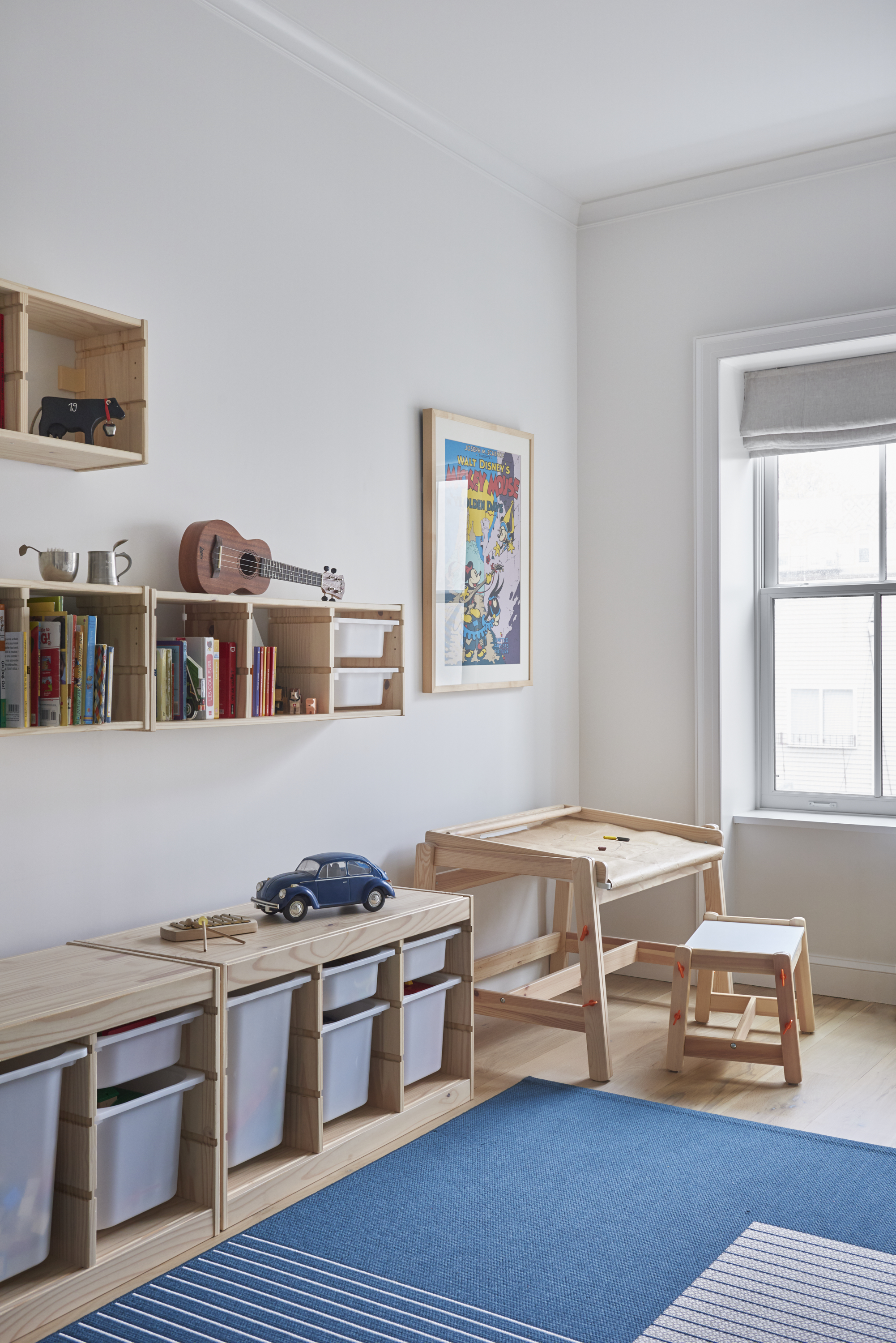
The nursery is a space of play, sleep, learning, and also mess. With toys, books, tissues, cleaning products, baby clothes, diapers, and more, the room truly takes a beating in terms of the array of things it contains. For this reason, expanding storage is essential.
When it comes to storages ideas for a nursery, cabinets, drawers and more are great for keeping all the big items, while smaller containers such as baskets or buckets can be highly useful to store either miscellaneous things that usually don't have a place, or to keep items that you need at hand. You can even add labels to the tubs to categorize all the items.
7. Go for paint colors that induce sleep
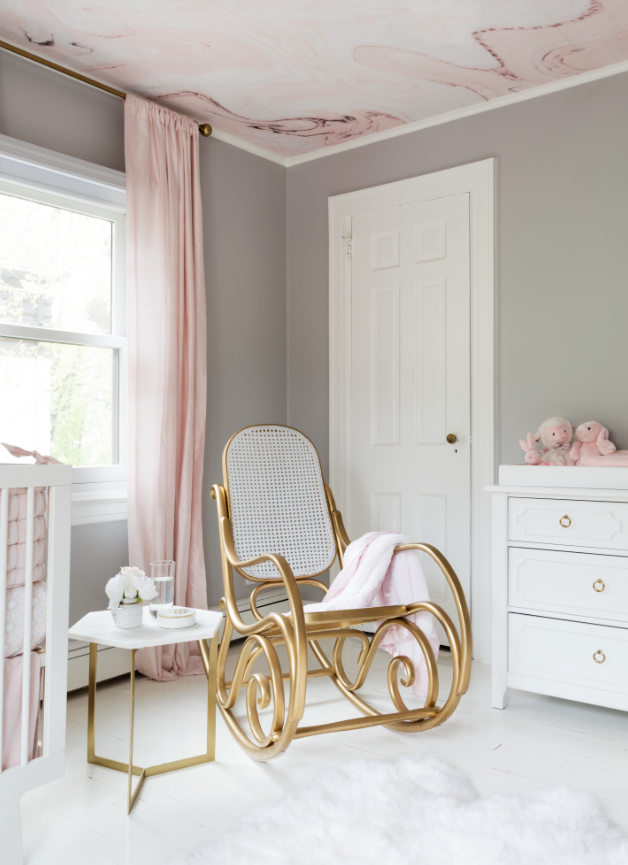
'Often it's the zippy colors that children are attracted to, and if left to their own devices, would choose to paint their bedrooms with intense hues that would not be conducive to a goodnight’s sleep,' says Reena Sotropa, principal designer, Reena Sotropa In House Design Group. 'We usually chose beautiful gold metallic wallpapers and vibrant magenta pinks for reading nooks rather than painting the entire room in those hues.'
Pastels also work well. 'When deciding on color schemes for children’s rooms, I tend to use pastel colors to create a fun and gentle atmosphere, that also aids in sleep,' says designer Stéphanie Coutas.
A color that is universally known to induce sleep is blue. It is also a color of depth and perception. It is seen as an indicator of security, order, stability, and reliability. Plus several colors go with blue, making it a versatile shade to design with. 'In a bedroom warm shades of pink, red, or lilac make you feel safe and cocooned, but cool aqua or blue tones would promote better sleep,' says Suzy Chiazzari, color consultant and holistic designer.
8. For a feeling of cocooning, choose a canopy crib
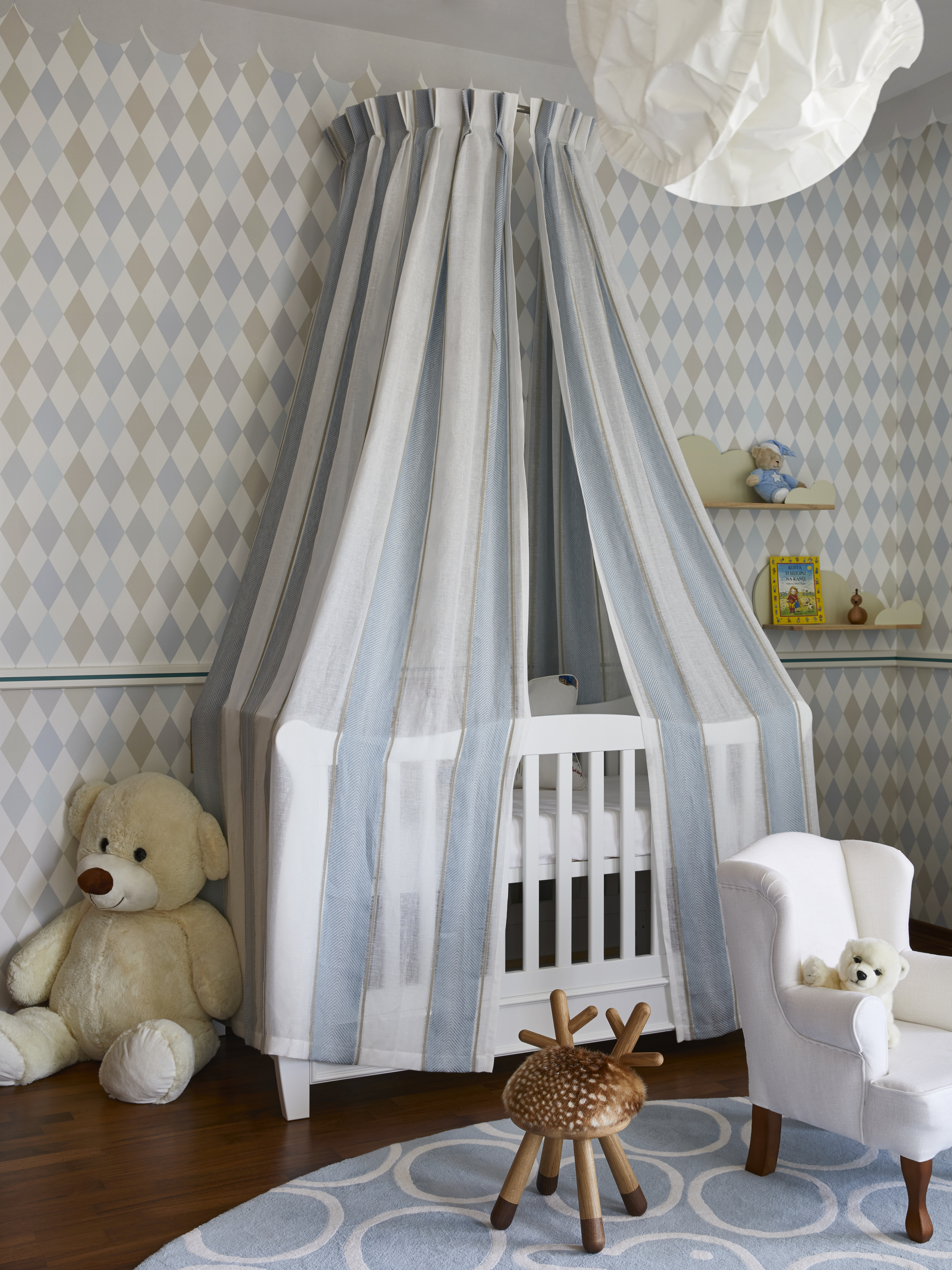
Canopy beds create a cozy, relaxing, and warm vibe as if embracing a child in a loving hug. The design is inherently welcoming, and with different design styles, can be made to look fun as well. From fabric drapes to beads, ropes, or even lights, a cute canopy can be created over the cot. Plus, they can easily be switched out if your toddler tires of them over the years.
'The draped canopy around the cot creates a cozy space for the child, evoking a sense of comfort and protection while tying in with the calm pastel color scheme,' says Stéphanie.
9. Allow plenty of natural light for a cheery atmosphere
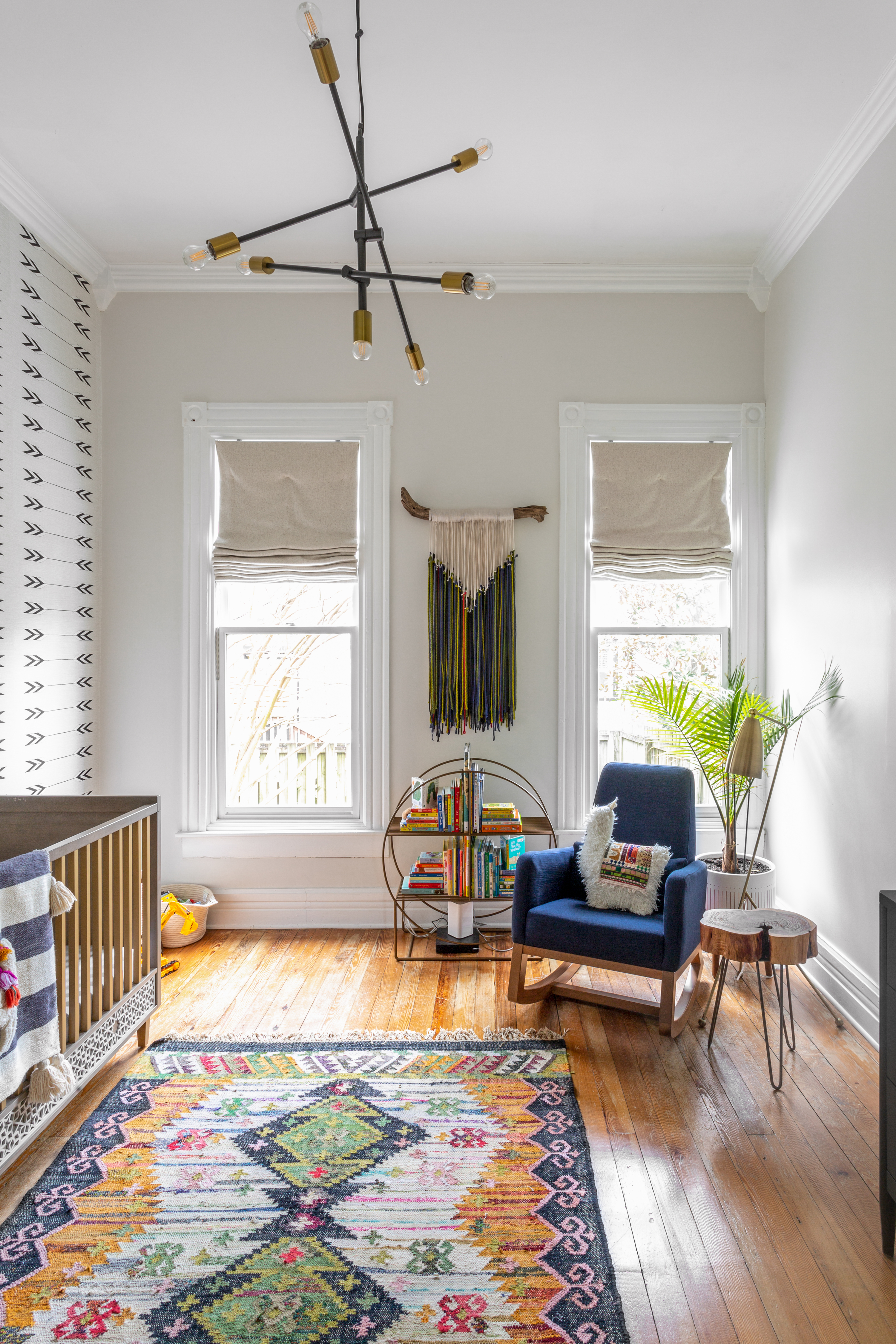
Natural daylight can greatly improve the quality of the nursery design. Windows and skylights provide a visual release for children and can help with regulating the circadian rhythm of the body. Sunlight not only brightens the mood and keeps children engaged, but it also keeps them alert, active and curious. If you have a reading space as well in the room, make sure it's close to a window so the child can look at the books and pictures without straining her eyes.
Do keep in mind that while sunlight is essential and great during the day, you want to ensure the nursery is dark, and cool in the evening. You don't want natural light to give the baby a premature wake-up call. Use lined bedroom curtains or roll-down blackout window shades to manage the incoming light. Use childproofing measures for all window treatments in a nursery or children's bedroom.
How do I start to design a baby girl's nursery?
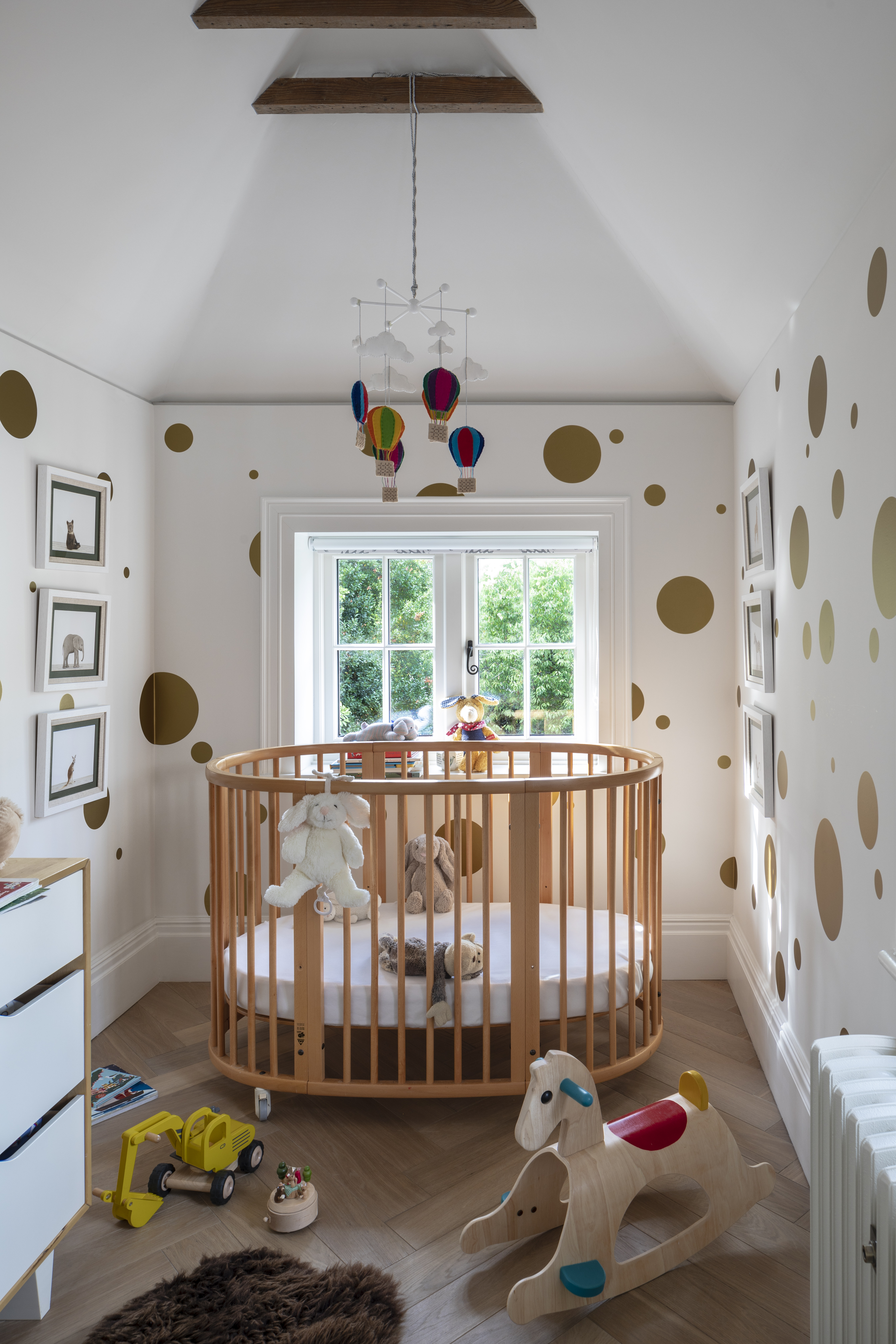
The foremost task at hand when you want to design a nursery is choosing a color palette. If you want to create a distinct identity for the room, and know you will be using it as is for a long time (perhaps more babies that you plan to have?), then go in for pretty pastel tones of pink and blue. These colors as per color psychology have a deep impact on the mind and can help create a lovely sleeping haven. Otherwise, a neutral-toned space will be timeless, allowing you to put the room to other uses once the baby grows up.
The second task you want to tackle is the furniture. In a baby girl nursery, you will need a comfortable rocking chair, a dresser for storage, a changing table, and a crib. You can choose pieces in bright hues so that color is only brought in through removable pieces.
Once you've narrowed down on these two essential elements, you should be able to hone in on a nursery theme. Say, for instance, the nursery essentially holds blues and greys, you could create a sky/universe theme and bring in more relative pieces like a globe, and a map and cover the ceiling with stars and the moon. A pink room can help you create a botanical garden-themed room.
When should I start decorating the nursery?
Preparing the nursery can be a fun job but one you should complete well in time before the baby arrives. Once you know the baby is on the way, you'll be surprised at how quickly time flies. To ensure you can take pleasure in the process and not be stressed at the end, make sure all your deadlines for tasks are completed on time.
Have a theme and a budget decided by the 20th week. This also means, you may or may not decide to find out the gender of the baby. If you don't plan on doing that, you could simply go for a gender-neutral space. Also, once you have a clear idea of what you want for the room, you can pen that down in the baby registry so you can make requests for fabrics, decor items, and more.
Make sure you order the furniture by the 23rd week. Some of your furniture choices can take up to 12-14 weeks to arrive so you want to order them as soon as possible. Paint or wallpaper the room by the 25th week, and finally, add all the storage by the 27th week.
All the other items can be brought in by week 27-30. You will be spending a lot of time in the nursery so make sure you have everything you need post-delivery.
Be The First To Know
The Livingetc newsletters are your inside source for what’s shaping interiors now - and what’s next. Discover trend forecasts, smart style ideas, and curated shopping inspiration that brings design to life. Subscribe today and stay ahead of the curve.

Aditi Sharma Maheshwari started her career at The Address (The Times of India), a tabloid on interiors and art. She wrote profiles of Indian artists, designers, and architects, and covered inspiring houses and commercial properties. After four years, she moved to ELLE DECOR as a senior features writer, where she contributed to the magazine and website, and also worked alongside the events team on India Design ID — the brand’s 10-day, annual design show. She wrote across topics: from designer interviews, and house tours, to new product launches, shopping pages, and reviews. After three years, she was hired as the senior editor at Houzz. The website content focused on practical advice on decorating the home and making design feel more approachable. She created fresh series on budget buys, design hacks, and DIYs, all backed with expert advice. Equipped with sizable knowledge of the industry and with a good network, she moved to Architectural Digest (Conde Nast) as the digital editor. The publication's focus was on high-end design, and her content highlighted A-listers, starchitects, and high-concept products, all customized for an audience that loves and invests in luxury. After a two-year stint, she moved to the UK and was hired at Livingetc as a design editor. She now freelances for a variety of interiors publications.
-
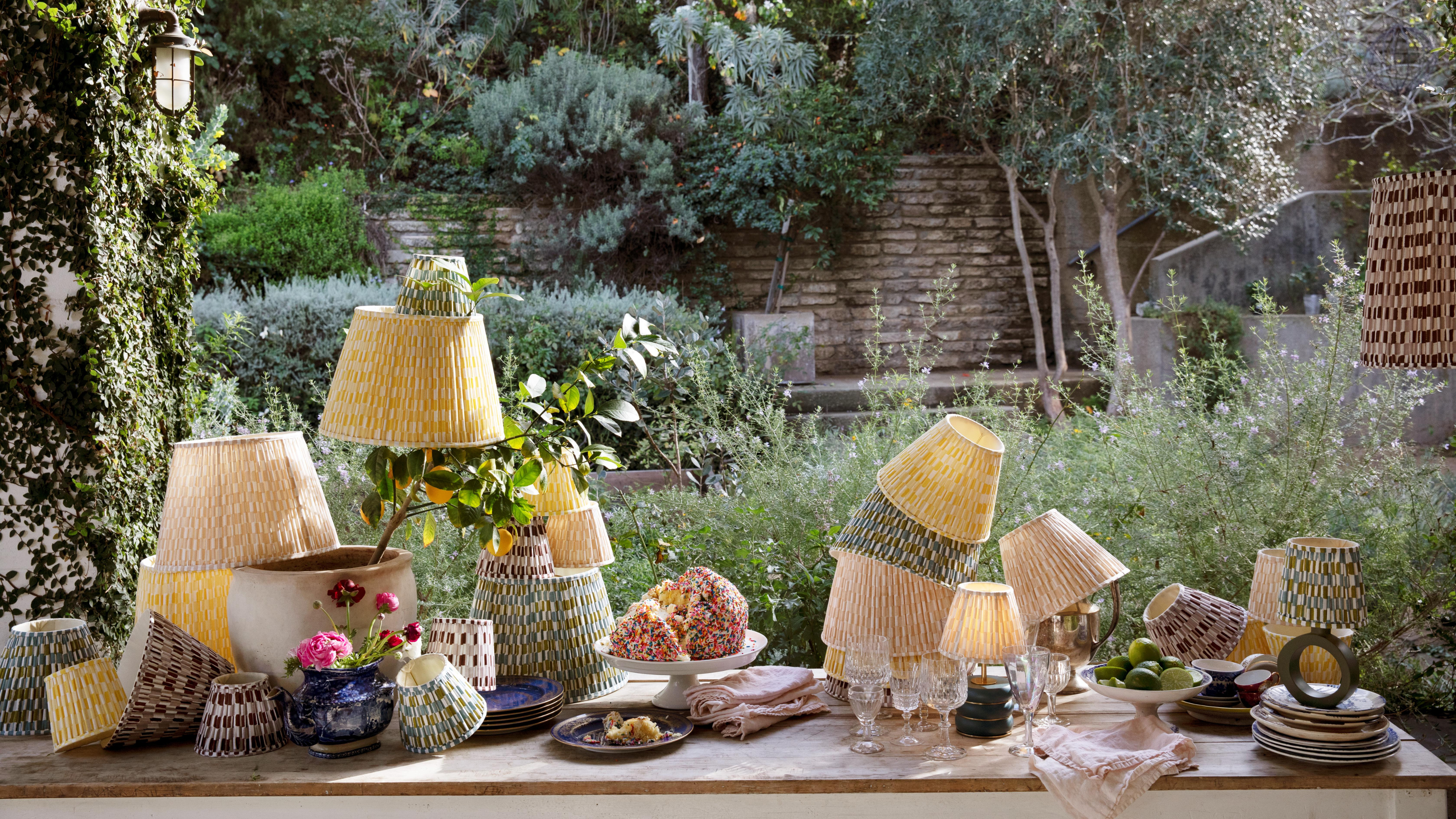 Fairy Lights Are Over — This Outdoor Lighting Collab Is What Comes Next (And Fixes Your Backyard’s Biggest Issue)
Fairy Lights Are Over — This Outdoor Lighting Collab Is What Comes Next (And Fixes Your Backyard’s Biggest Issue)No plugs, no problem. Pooky x The Novogratz makes a compelling case to ditch your string lights for good
-
 The Deep Dive — Why Architect and Designer Alvar Aalto Has a Last Legacy in Design
The Deep Dive — Why Architect and Designer Alvar Aalto Has a Last Legacy in DesignAlvar Aalto remains so significant to Finnish design — from how they approach the seasonal light to inspiring the mediums, designers, and brands that prove important to the country’s buoyant creative scene